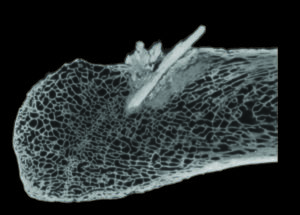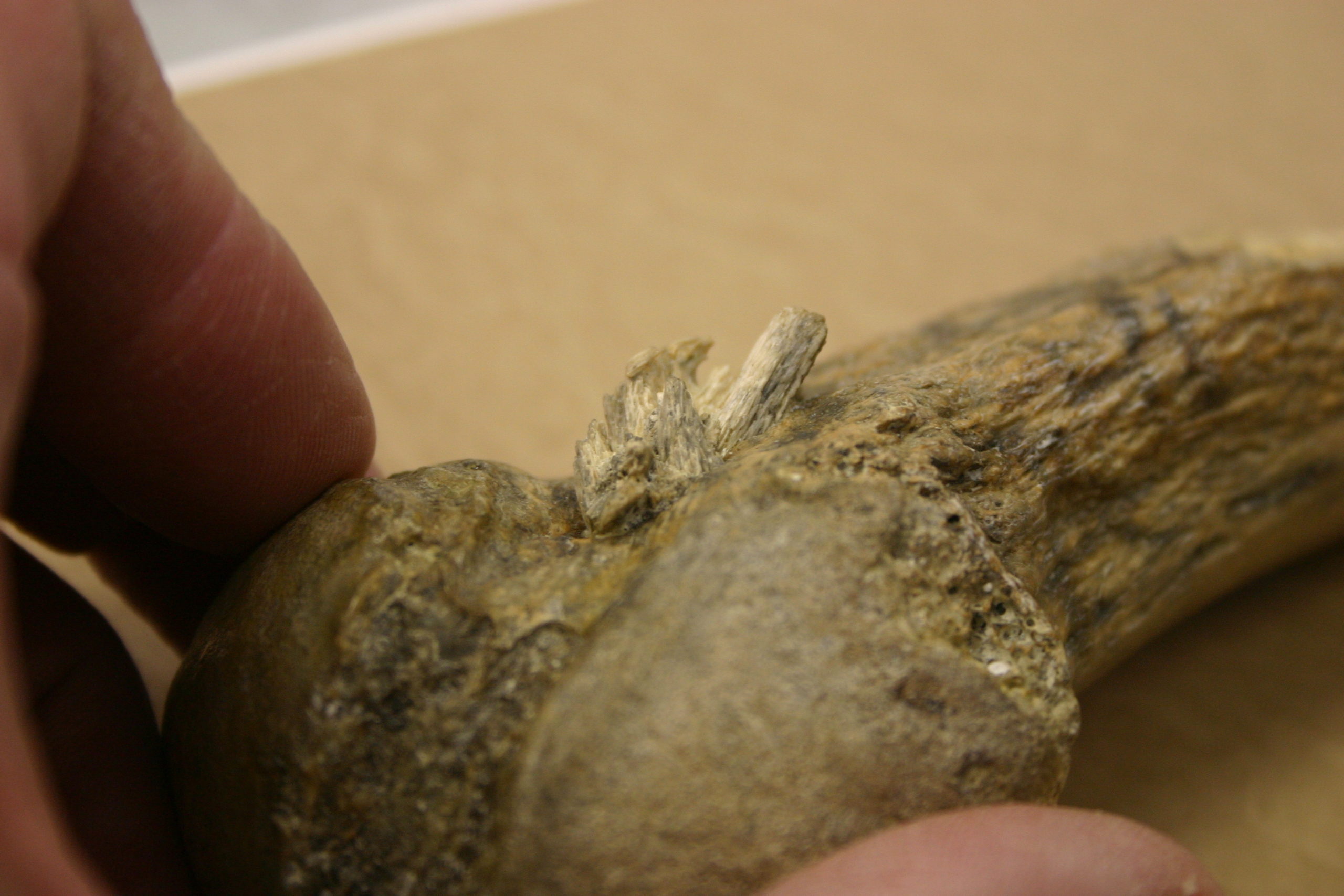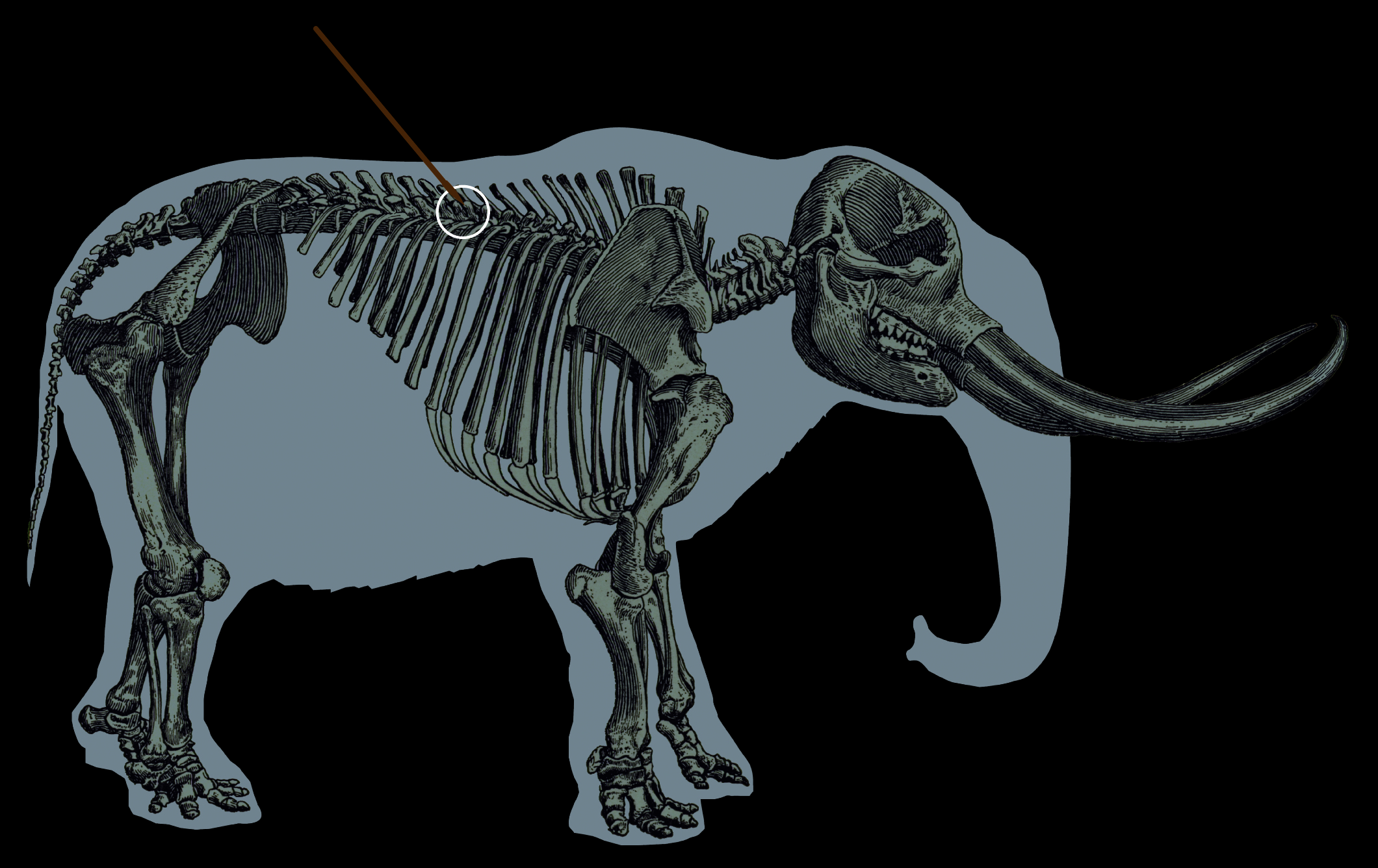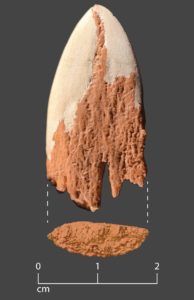On the Olympic Peninsula, 13,900 years ago, a human attacked a mastodon with a sharp-pointed weapon.
The hunter was unsuccessful. The mastodon got away, but with an injury. The weapon – a projectile with a point made out of bone – was lodged in one of the animal’s rib bones. It stayed there until the mastodon died.
Archaeologists dug up the bone with the point in it in the late ’70s, but its full significance wasn’t described until just recently by a team of researchers at Texas A&M University. Michael Waters, director of the Center for the Study of the First Americans at Texas A&M, spoke to the Texas Standard about the discovery. Listen to the story above or read the transcript below.

A CT scan of the bone point fragments embedded in the rib.
Courtesy of Michael Waters / Center for the Study of the First Americans
This transcript has been edited lightly for clarity:
Texas Standard: Tell us a little bit more about what’s so special about this weapon that you and your colleagues recently studied.
Michael Waters: Yeah, well, we’ve been studying this specimen for some time, but with new CT and 3-D computer programs, we were able to actually refit all the pieces of the projectile point that was embedded into the rib. And when we did this, it clearly showed that it was the tip end of a sharpened projectile point made by humans. And they were clearly hunting mastodons, you know, 13,900 years ago up in the Pacific Northwest.
Back when this was originally excavated in the 1970s, did you notice there was some kind of anomaly there in that rib bone? I’m just sort of wondering how you came to take another look at it.
Yeah, It was first excavated by Carl Gustafson, who was at Washington State, and he found the rib with the embedded projectile points. But at that time, they only had X-ray technology and the imagery wasn’t that great. And people didn’t believe that it was a projectile point. So years ago, I got in touch with Carl back in 2008 and I asked him if I could study the bone. And so we did an initial study which was published in 2011, and then the new study, which was just published, we were able to reconstruct the morphology of the tip of the projectile point.
That’s fascinating. What was it made of, by the way?
We did DNA analysis on the bone in our initial study and it was made of mastodon bone and in the new study that we did just publish, we could clearly tell from the CT images that this was cortical bone and clearly had to come from the leg bone of another mastodon. And so, you know, we knew that another mastodon had been killed at some point and the bone had been shaped into a projectile point and, you know, eventually used to help take down the Manis mastodon.

















